
Scientists Come Closer to Solving Caribbean Seaweed Mystery
mega-blooms of the dark-brown seaweed known as sargassum.In June 2018, scientists recorded 20 million metric tons of seaweed, a 1,000% increase compared with the 2011 bloom for that month.“There are probably multiple factors” driving the growth, said oceanographer Ajit Subramaniam at Columbia University. “I would be surprised if there is one clear villain.”Still, a recent study examining the chemistry of seaweed from the 1980s up to 2019 offers the strongest evidence yet that water coming from city and farm runoff has been a major contributor to expansion of the so-called Great
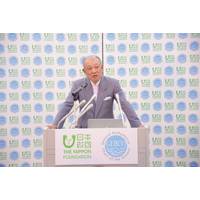
OiA '19 & GEBCO Seabed 2030
over to six panellists who will each deliver a short presentation elaborating upon various aspects of Seabed 2030, its connection to the UN Decade of Ocean Science for Sustainable Development and the role of industry in both.The panellists will include Dr Vicki Ferrini, Research Scientist at Columbia University’s Lamont-Doherty Earth Observatory and Head of the Atlantic and Indian Ocean Regional Centre of Seabed 2030, who will represent the Seabed 2030 Project Team and provide an overview of the project. “This will be my first Oi event,” Dr Ferrini said, “and I'm thrilled
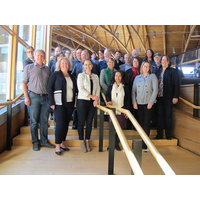
First Nippon Foundation-GEBCO Seabed 2030 Project Meeting
The first Nippon Foundation-GEBCO Seabed 2030 Project regional mapping meeting for the Atlantic and Indian Oceans took place this month at the Lamont-Doherty Earth Observatory of Columbia University. The meeting in Palisades, NY, was chaired by Dr Vicki Ferrini, who leads the Seabed 2030 Atlantic and Indian Ocean Regional Data Center. In order to better raise awareness of complementary mapping efforts in the region, the session was coordinated to coincide with a US Federal Agency Working Group on Coastal and Ocean Mapping, as well as a meeting of the leads of the Atlantic Ocean Research
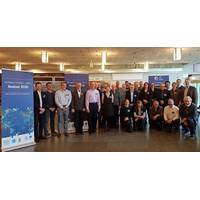
Seabed 2030 Meeting Held in Stockholm
between four RDACCs. These centers are located at The Alfred Wegener Institute (AWI), Germany, covering the Southern Ocean; The National Institute of Water and Atmospheric Research (NIWA), Wellington, New Zealand, covering the South and West Pacific Ocean; The Lamont Doherty Earth Observatory, Columbia University, U.S., covering the Atlantic and Indian Oceans; and Stockholm University, Sweden, in partnership with the University of New Hampshire, U.S., for the Arctic and North Pacific Ocean. Regional products are fed to the Global Data and Coordination Center hosted at the British Oceanographic Center
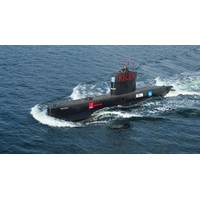
Danish Man Gets Life for Murdering Journalist on His Submarine
had been found on Madsen’s computer in a laboratory he ran.Wall was a freelance journalist whose work had appeared in Harper’s Magazine, Time, the New York Times, the Atlantic Magazine, the Guardian, Foreign Policy and the South China Morning Post.She held degrees from New York’s Columbia University and the London School of Economics and had written about topics ranging from gender and social justice to pop culture and foreign policy, according to her LinkedIn profile.“He Brought Coffee and Cookies”Wall had been writing an article for the U.S. magazine Wired on Madsen&rsquo
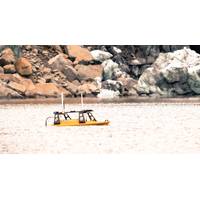
Case Study: Mapping a Glacial Landslide
; In October of 2015, a massive landslide was detected at Tyndall glacier in southeast Alaska, sending an estimated 145 million tons of valley wall into Taan Fiord. The landslide’s significant mass created a seismic signature that was detected by seismologists thousands of miles away at Columbia University in New York. Taan Fiord is an arm of Icy Bay in southeast Alaska. Over thousands of years, Tyndall Glacier eroded the valley walls creating very steep sidewalls. Over the past several decades, Tyndall Glacier has retreated, no longer supporting those sidewalls. The steepening and then debuttressing
BOEM and Atlantic Sand Assessment Project
, Florida, to Massachusetts beginning in 2015. The core analysis provides important information on thickness of sediment layers, composition of sediment layers, organic material content, and overall compatibility with beach sands. LDEO is a world-renown earth sciences institution located at Columbia University’s campus in Palisades, N.Y. The Lamont-Doherty Core Repository, established nearly 70 years ago, contains one of the world’s most important and unique collections of scientific samples from the deep sea. The dedication and tour will include remarks by Renee Orr, Chief of BOEM&rsquo
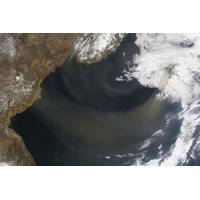
How Do Desert Storms Affect Ocean Phytoplankton?
winds sweep these particles as far as the Pacific, where dust ultimately settles in the open ocean. This desert dust contains, among other minerals, iron — an essential nutrient for hundreds of species of phytoplankton that make up the ocean’s food base. Now scientists at MIT, Columbia University and Florida State University have determined that once iron is deposited in the ocean, it has a very short residence time, spending only six months in surface waters before sinking into the deep ocean. This high turnover of iron signals that large seasonal changes in desert dust may have dramatic
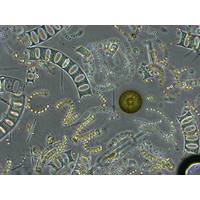
Coexisting in a Sea of Competition
, and all of those species of microscopic marine plants that form the base of the marine food web need the same basic resources to grow—light and nutrients. A study by a team of scientists from the Woods Hole Oceanographic Institution (WHOI), University of Rhode Island (URI), and Columbia University, published April 13 in the Proceedings of the National Academy of Sciences reveals how species of diatoms—one of the several major types of marine phytoplankton—use resources in different ways to coexist in the same community. "The diversity of phytoplankton has puzzled



 February 2024
February 2024





